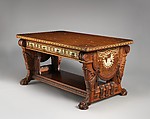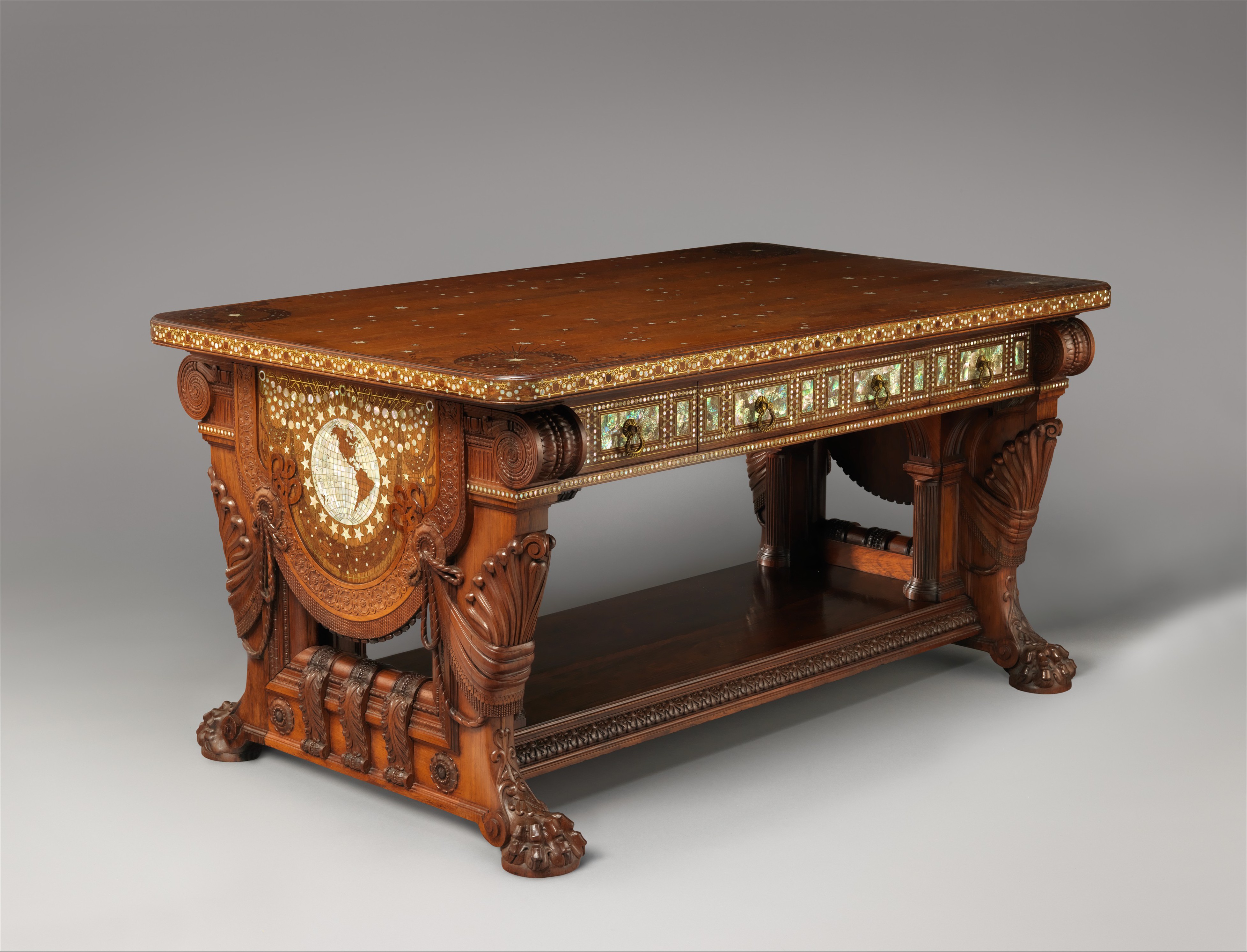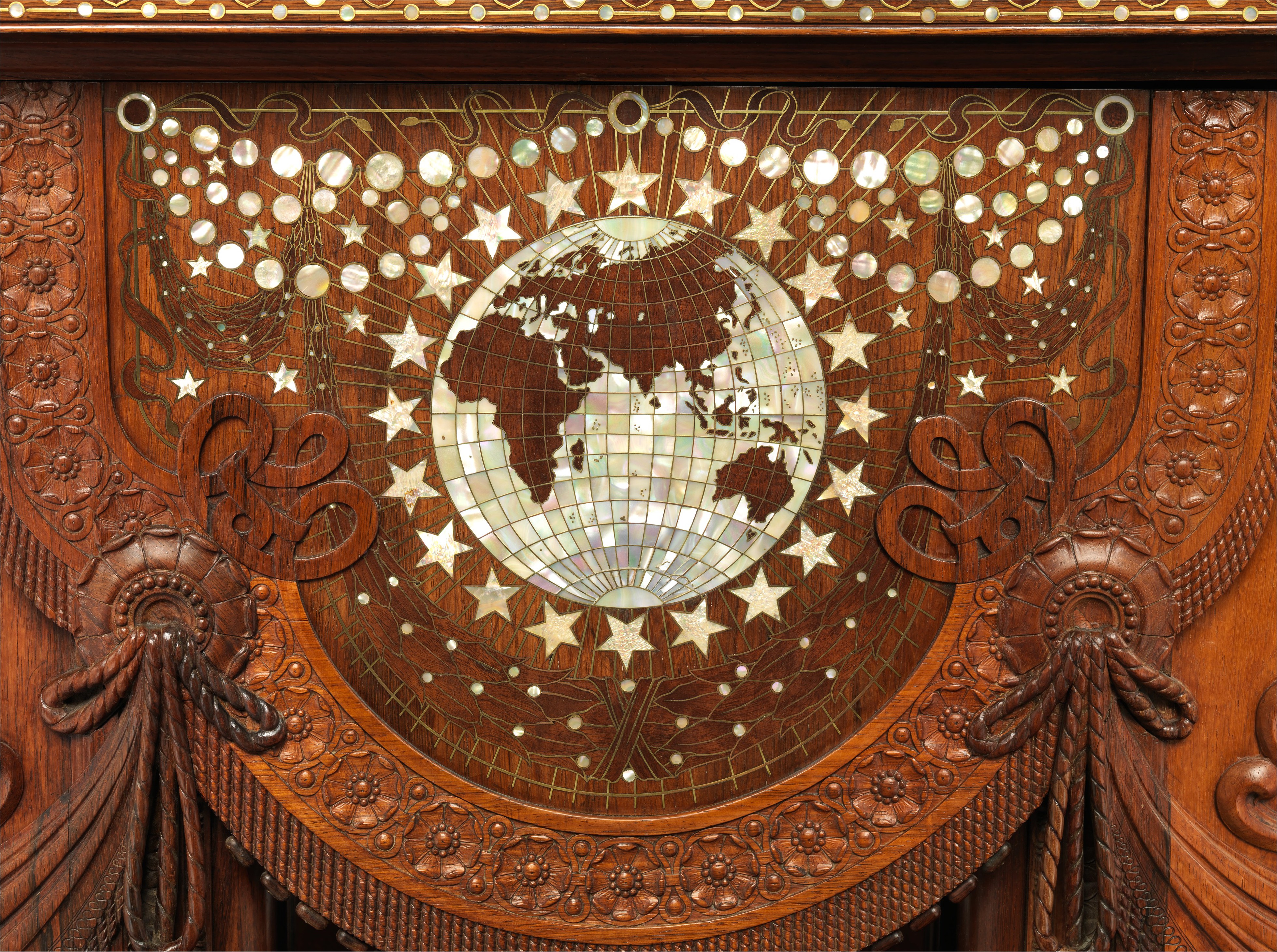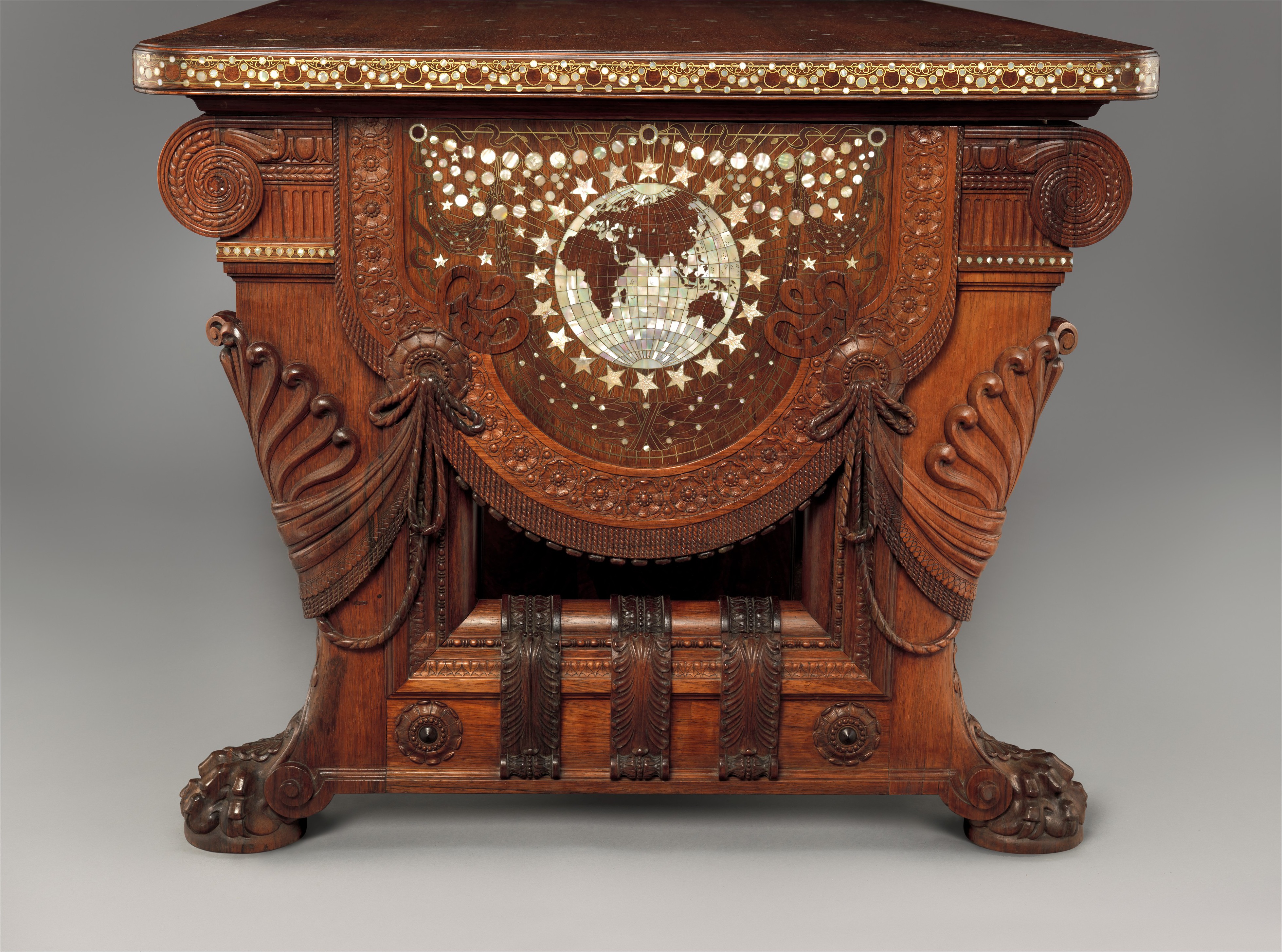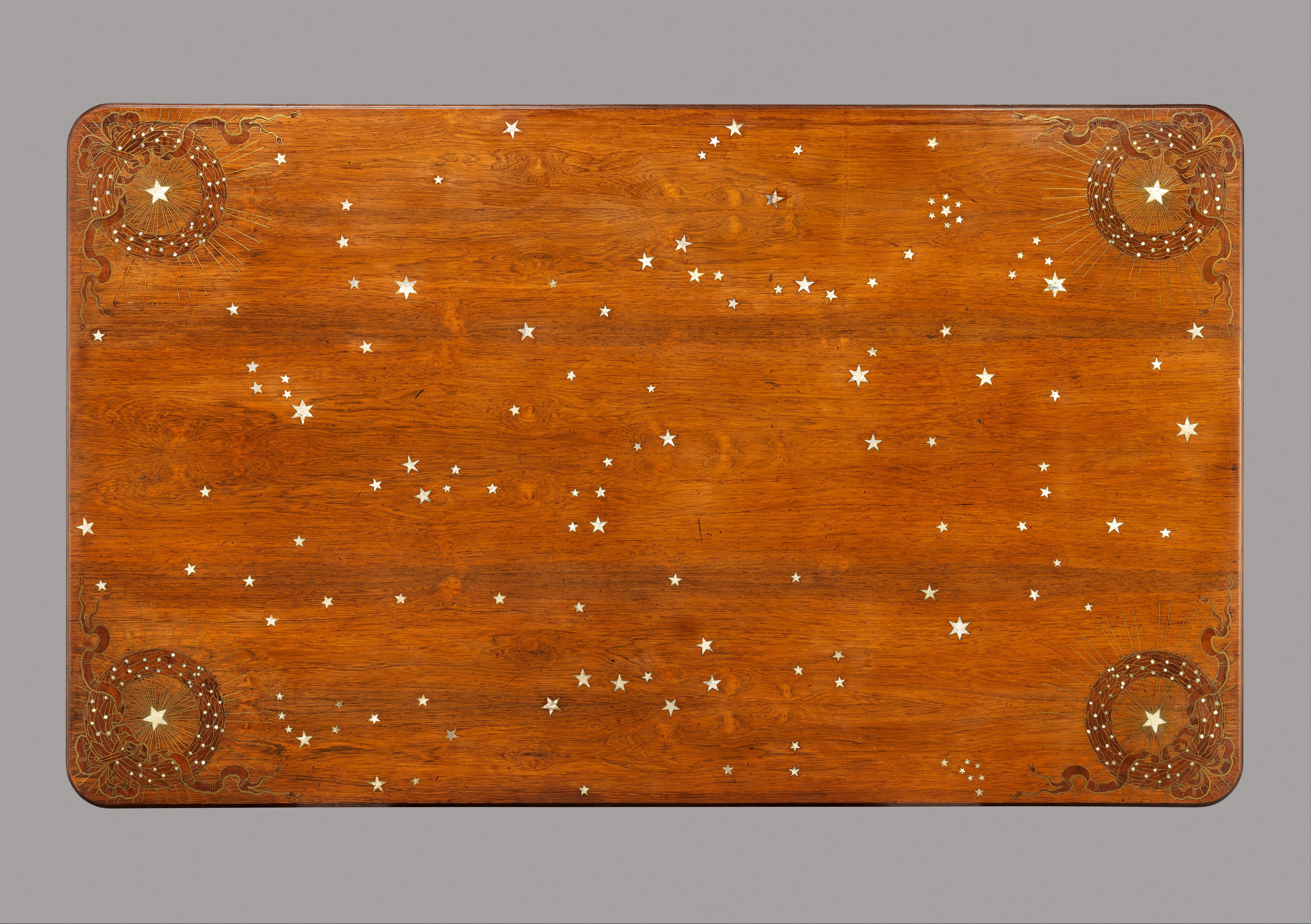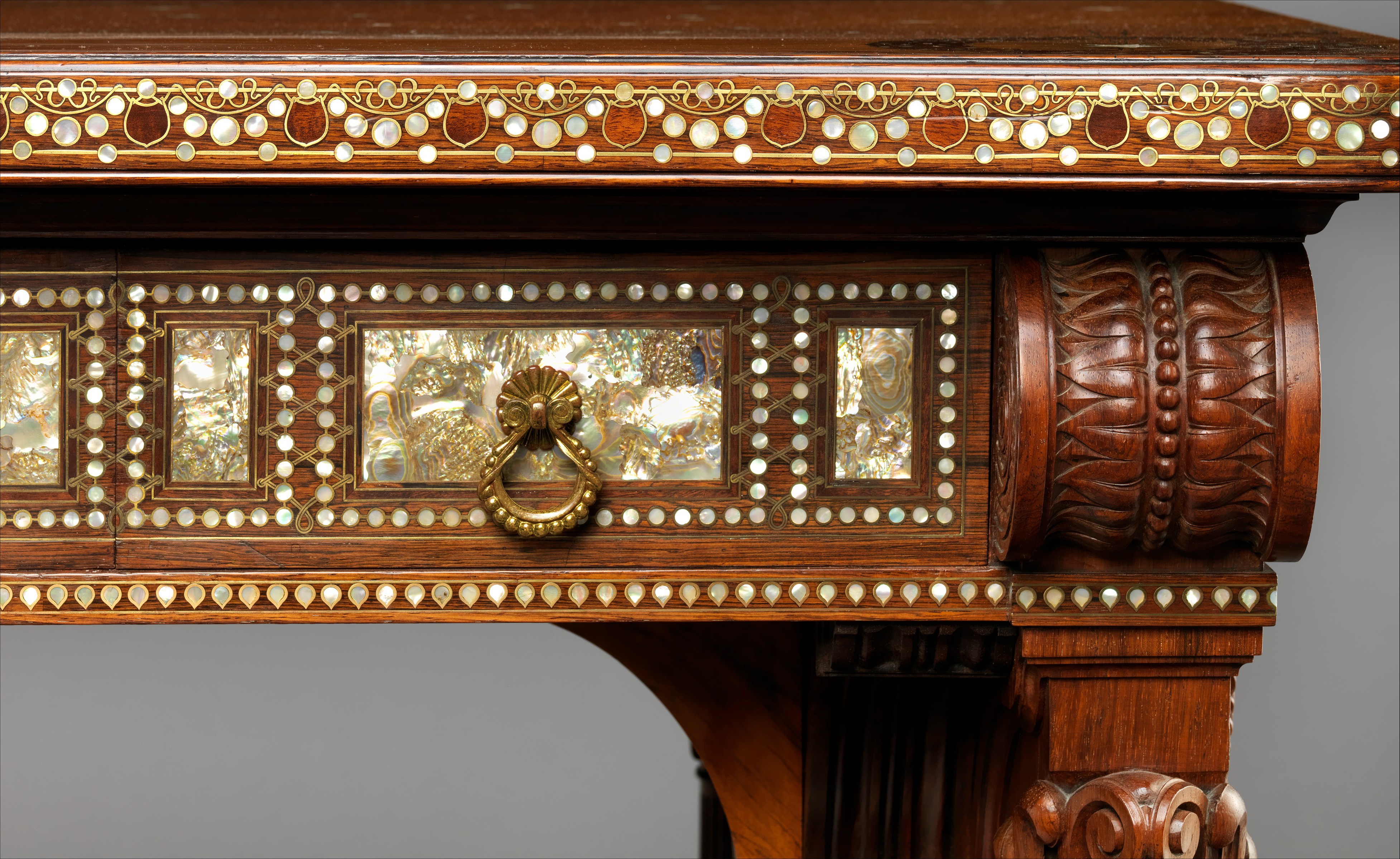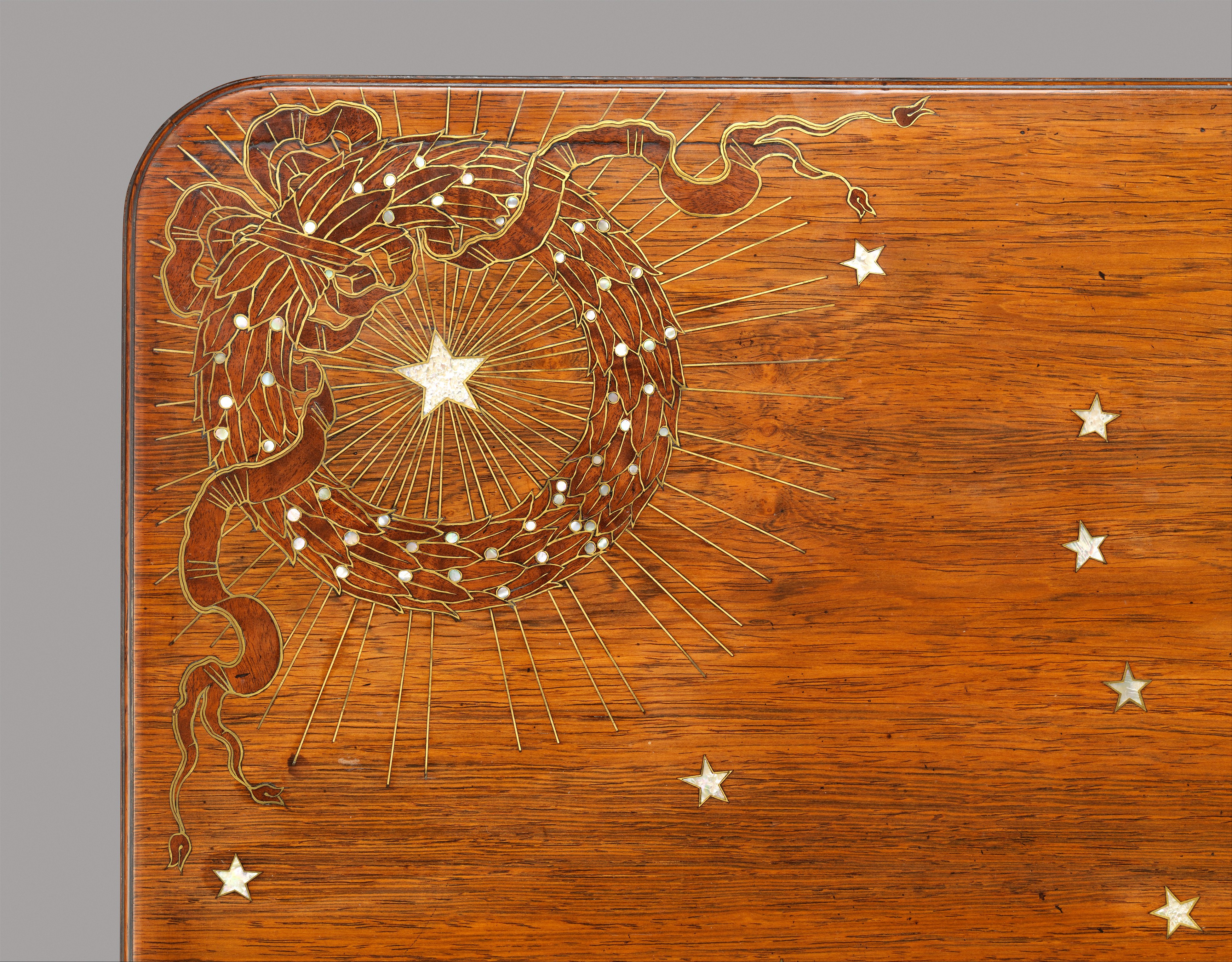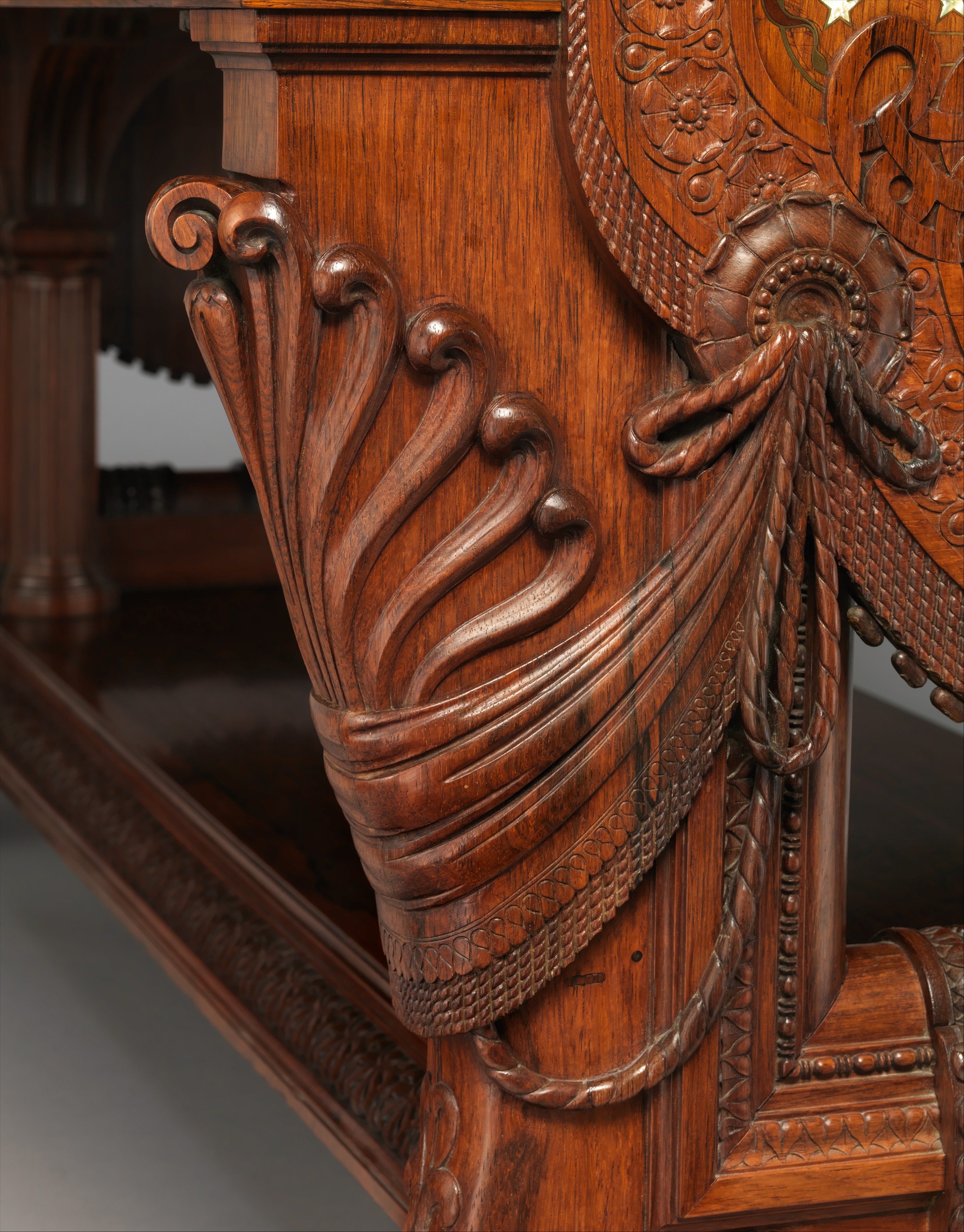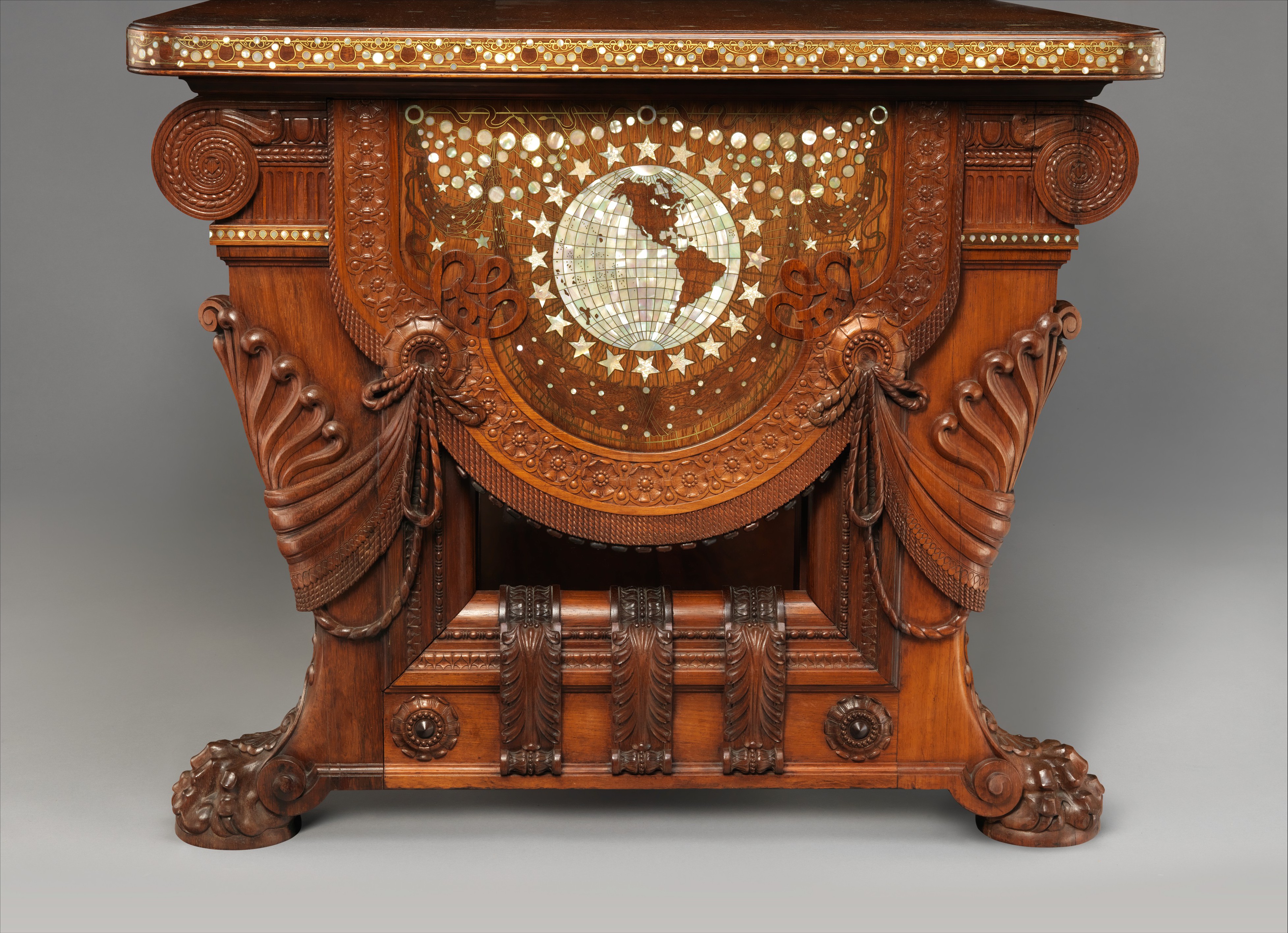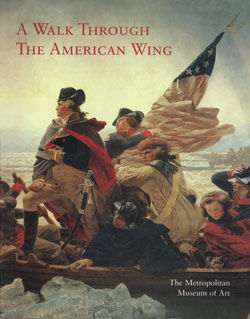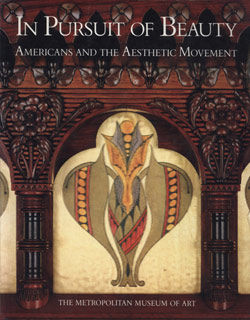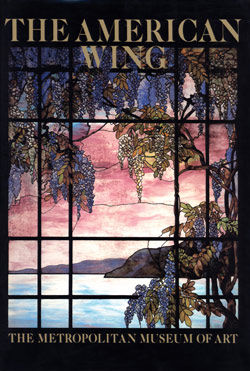Library Table
Herter Brothers American
Herter Brothers, the New York firm of the German-born brothers Gustave and Christian Herter, was arguably the leading cabinetmaking and decorating firm in the United States during the late nineteenth century. Formed at a time when wealthy American financiers and industrialists were redefining luxurious standards of living, Herter Brothers created cosmopolitan environments encompassing every aspect of interior design, including furniture and woodwork, wall and ceiling decoration, floor treatments and draperies, for some of the most visible and affluent clients of the era. Between 1879 and 1882, Herter Brothers designed and decorated William Henry Vanderbilt's new Fifth Avenue mansion. This monumental table was the centerpiece of his library, and complemented the paneling of the room in its use of rosewood with lavish mother-of-pearl and brass inlay. Although called a library table, it was never intended for study per se; rather, it was a piece of sculpture and a monument to Vanderbilt himself. The table alludes to Vanderbilt's power and prestige: he was the son and heir of railroad baron "Commodore" Cornelius Vanderbilt (1794–1877) and, at the time, was considered the richest man in America. The table's overall shape, lion-paw feet, and stylized palmettes recall the marble furniture of the Roman empire; the wreaths enclosing a star in each corner of the table top echo Napoleonic heraldry; the globes on each end imply that Vanderbilt had the world within his grasp; and the table top presents a celestial field with the stars over the northern hemisphere on the day Vanderbilt was born, May 8, 1821.
#3910. Library Table
-
3910. Library Table
-
1132. Library Table
-
1131. Library Table
Playlist
Due to rights restrictions, this image cannot be enlarged, viewed at full screen, or downloaded.
This artwork is meant to be viewed from right to left. Scroll left to view more.
